Caution on copyright should you wish to use photographs and diagrams from my website. I have included attribution wherever known and attempted to seek permissions from authors/owners of copyright who could be still found. This was not possible in all cases as the source of the photo was unknown or no longer in existence.
Home study for the CAA licence and a successful 1179H flight check by Tim Carbis, our squadron trainer, permitted me to leave the RAF with a Commercial Pilot’s Licence (Helicopters) with type rating for the Gnome Whirlwind. I sought employment with Bristow Helicopters based at Redhill in Surrey, the World’s largest operator of helicopters. They had purchased the Gnome Whirlwind for operations in the Persian Gulf and elsewhere. I accepted the offer of a job instructing at Middle Wallop, reasonably convenient to our bungalow in Basingstoke. Bristow’s had a contract providing ab initio pilot training for the Army Air Corps using the Hiller 360 B and 360 C.
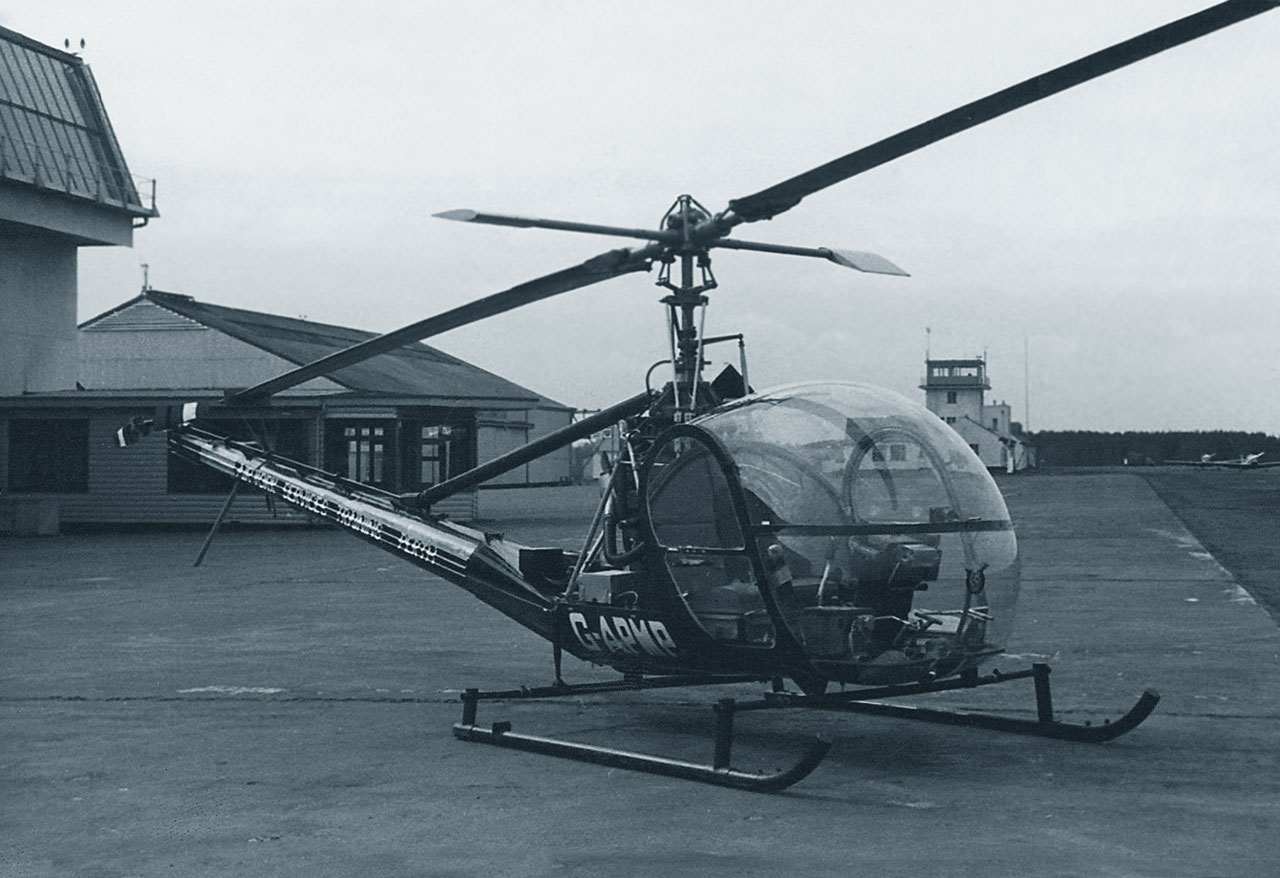
Hiller UH12C
Working life was very much akin to the RAF. We even lunched in the officer’s mess. The students were drawn from many different Army units and were of all ranks from sergeant to major. The manager of the operation was Brian Shaw with Bob Brewster, Chief Pilot, both first class men and pilots. Having just returned from the jungles of Borneo I considered myself somewhat adept at limited power operations. However, sitting next to Bob as we slowly rose up the side of a 50 foot tree and then heading straight forward into the tree foliage was frightening until we felt the bite of the translational lift taking us up and over the top of the trees with inches to spare. Bob was masterful with the Hiller 360! With his instruction I completed the assistant instructor’s course.
The Hiller 360 was an ideal aircraft for ab initio helicopter instruction. It was very simple with no vices except, perhaps, its limited power. Hovering over corn fields when the stalks were long could dissipate the ground cushion making it impossible to move off from the hover before gaining translational lift. It had been known for an instructor to offload his student in order to climb away and reposition to a more favourable location. An essential lesson to be taught is engine-off landings, viz. throttling back the engine to idle, entering autorotation and completing a safe landing without power. Like all flying instruction exercises one briefs the student in the crew room before the flight, one demonstrates the exercise in the air AND THEN ONE HAS TO ALLOW THE STUDENT TO HANDLE THE CONTROLS AND REPEAT THE MANOEUVRE! I have to admit that teaching engine-off landings was always a white knuckle experience!
It was at the end of the course when I received the phantom phone call from Alan Green, Operations Manager at Head Office in Redhill aerodrome. “Proceed to Iran next week. Accommodation will be available for your family in Tehran in two months’ time. You will work a cycle of one week on duty on Kharg Island in the Persian Gulf and one week off with the family in Tehran.” Having just left the disciplined world of military service and very new into that of civilian life, it did not occur to me to protest at this sudden change of assignment. Also, there was the interest of living abroad with my wife and child, something that had not been possible in the RAF. I managed to squeeze an extra week for a short family holiday to Majorca then flew by BOAC Comet to Abadan at the north end of the Gulf.
At that time, the Bristow operation in Iran was based at Khorramshahr, some 10 miles north of Abadan on the Shat al arab river which divides Iran from Iraq. Three weeks after my arrival the base moved to Kharg Island. The company operated under the name of Iran HeliTaxi which was, like so many companies, somehow tied in with the Shah’s family. This was long before the toppling of the Shah and the arrival of the Ayatollahs.
Kharg Island is a small island located a few miles off the east coast of the Gulf. It had a small population of locals living in a village. All over the island were, and probably still are, oil installations and huge pipes bringing the oil ashore and leading to tanker jetties. There were a few sad looking palm trees and little else in the way of vegetation. Iran HeliTaxi were contracted to the Iran Pan American Oil Company (IPAC). Food in the American style mess was good. We lived initially in a long bungalow type building but after a few weeks contractors were banished to huge Houston trailers which had the benefit of air conditioning – an absolute necessity in that hot and humid climate.
Our little group consisted of Bob Balls – senior pilot, Jock Fletcher – licensed engineer, Wilf Shepherd – avionics engineer, John French – fitter, Alfie Hill – fitter, and three local Iranians, Abdullah, Henry and another whose name I forget. Bob Balls and I alternated our periods of duty – one week on and one week off. During the week off one was free to leave the Island and this meant boarding the Iran Air DC6 and spending a grinding 2 hours flying to Teheran. In my case, the week in Tehran was time to spend with my family. We had two Gnome powered S55/Whirlwind helicopters so one was in the unusual position of having only one pilot but two machines. The aircraft were mounted on two huge air-filled rubber floats. This gave a feeling of over-water safety but since the Gulf was packed with sharks – one could count hundreds in a 45 minute flight to the rig – a ditching would prove rather exciting if a curious shark or two decided to rub against the rubber!
There was a sort of golf course with the hazard of ricocheting a ball off the oil pipes. The only other entertainments were films in the IPAC mess or alcoholic drinks (really only the local beer) and very old films in the Seaman’s Club. The seamen employed by IPAC were mostly German. The helicopter team were all British. Watching episodes of “War in the Air” night after night had its amusing side. When a German aircraft was shot down the British would applaud and the Germans boo and vice versa. It was all done in fun without any bad feeling. The Seaman’s club seemed to have one film only – Burt Lancaster in the French Foreign Legion. Wilf Shepherd, could mouth the words before the actors spoke!
After arriving at Abadan airport I was met and driven to the base at Khorramshahr. My arrival permitted Alastair Gordon, one of Bristow’s most senior pilots to depart. Alastair became one of the most respected figures in the helicopter industry. I had at that time some 1,500 hours in the Gnome Whirlwind due to my RAF experience. As Bristow had only recently purchased these machines, my experience was considerably greater than that of any Bristow pilot. Nevertheless, as is normal practice, it was necessary that I be checked out by a qualified Bristow check pilot. So Alastair and I took off for familiarisation of the local area and the check. All proceeded well until we came to perform simulated computer failure which, as explained in the section on my 225 Squadron experience, involved the check pilot suddenly retarding the rotor speed select lever. This would isolate the control of the rotor rpm from the computer and cause the engine to quickly run down to ground idle speed. Such action would necessitate the pilot being checked, to very quickly lower the collective lever in his left hand to prevent rotor “decay” (meaning loss of rotor rpm) and, with his right hand, simultaneously pull a bicycle brake type lever mounted at the top of the cyclic stick (held in the right hand). This latter action would give him direct control of the engine by means of the twist-grip throttle on the end of the collective lever. Then, the pilot would need to gently twist the throttle open to increase engine speed to regain power so that the collective lever could be raised, increasing pitch on the main rotor blades, and recovering the height lost.
Now I was very aware that Bristow’s had not installed the Flight Idle Stop which we had in the RAF to prevent the engine speed decreasing below 18,000 rpm and into the prone to stall region. Frankly, I was surprised we were attempting this exercise without the protection of the modification so my handling of the throttle was very gentle. Alastair commented after my first attempt that I had lost too much altitude. After my second attempt he made a similar criticism. During my third attempt the inevitable happened and the engine stalled. I entered autorotation and swung round into wind preparing for an engine-off landing on the Shat al arab river. Alastair took over the controls and I transmitted the Mayday call. Now soon after take-off, Wilf Shepherd had left his post at the radio and so no one heard my Mayday call back at the oil company base. My call was heard, however, by the pilots of the BOAC Comet who had delivered me to Abadan the evening before. They actioned the call and alerted the authorities. Alastair executed a perfect landing on the river. We climbed down from the cockpit and, kneeling on the sponsons, inflated the lifejackets to use as paddles to prevent us drifting into Iraq – an event that would have had serious consequences. Eventually, the Iranian navy arrived in motorboats and towed us back to base. I was very relieved when no criticism was directed at me for burning out an almost new and very expensive engine. Within a month all Bristow’s S55 Series 3 aircraft were fitted with the Flight Idle Stop!
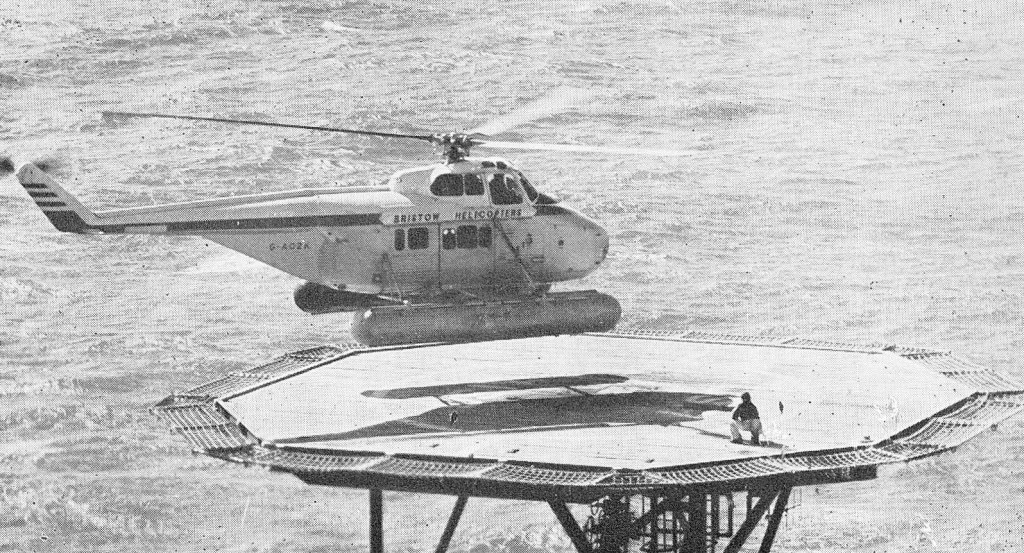
GNOME WHIRLWIND WITH RUBBER FLOATS – SIMILAR TO THE TWO MACHINES AT KHARG BUT, IN FACT, FURTHER DOWN THE GULF AT THE BRISTOW OPERATION AT DAS ISLAND
The two rigs in use were the PANINTOIL 1 and the PANINTOIL 2. Both spent their time on location to the west of Kharg Island. Most flights were to and from these two rigs with occasional excursions elsewhere.
One very notable excursion followed severe flooding on the mainland east of Kharg. A helicopter was loaded with provisions and I set off with an admiral in the cockpit – the brother-in-law of the Shah. We flew to Bushehr, half an hour south-east of Kharg island. Here I hovered whilst food was thrown out to a crowd of locals being blown around by the rotor downwash. We flew onwards during the next couple of days to other locations then returned to Kharg.
Another memorable flight was to an oil depot at the top eastern end of the Gulf to collect a piece of machinery. The memorability of this flight was twofold. One, the soak temperature on the gauge on the windshield just prior to starting up was over 50 degrees centigrade necessitating a very prayerful take off! Two, the long flight to the rig took its toll in that I was very tired and unbearably hot. There was no source of relief except to hold one’s hand in the slipstream outside the cockpit window and divert air to the face! Again, we experienced the problems of a totally unstable aircraft with no auto stabilisation and no means of cooling (or warming) the pilot and passengers, n.b for the technically minded – a helicopter is both dynamically and statically unstable so, without an autopilot, requires the pilot to constantly operate the controls to maintain the correct attitude – pitch and roll – and the correct heading and altitude
After two months on Kharg Island, my incredibly brave and loyal wife, Margaret, arrived at Tehran with our baby son, Paul, and we moved into the third floor of an apartment rented by the company north of the centre of the city. She was the first Bristow pilot’s wife to arrive and was aged 23 years! Public executions by hanging from street lamp posts ceased a week before her arrival! The view from our apartment was of bland modern buildings but the waste ground around the apartment block contained families living in tents. The local bakers was a few yards down the street. The bread looked like large naan bread and was quite tasty. The baker would wipe the flies off before handing it to his customers. We found the Iranians generally to be pleasant except for some of the taxi drivers who could become nasty to the point that my wife has had to run to avoid being run down by refusing to pay excessive fares.
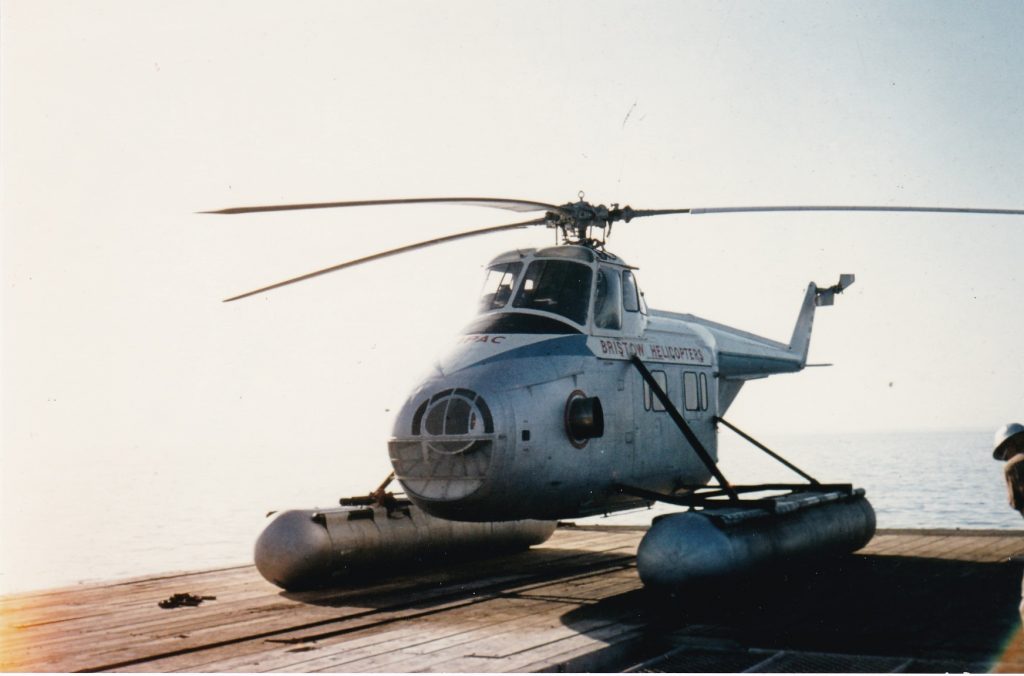
SITTING ON THE HELIDECK OF EITHER PANINTOIL I OR PANINTOIL II – THE TWO IRAN PAN-AMERICAN OIL COMPANY RIGS
After 11 months in the Gulf, I decided to leave the employ of Bristow’s and gave the requisite three month’s notice. Before departing my wife gave birth to another daughter, Suzanne, who, unlike her older sister, our first child, lived! Fortunately, the obstetrician and hospital gave her good treatment and all went well.
At the back end of 1965 the airlines of the World had entered one of the cyclical peaks in demand for pilots. There were dozens of jobs advertised in the aviation magazines. I felt that I had a choice. A particular favourite was Ansett Helicopters in Australia; the job – flying a holiday route between the east coast and Hayman Island. A friend and former RAF colleague, Andy Pryde, was employed there and was confident that a vacancy would arise shortly. Acting in good faith we had all our few possessions in Tehran crated up and shipped to Australia. The job never materialised and a year later we recovered our property from the bond in Sydney harbour and had it shipped to England. Only one glass was broken and one saucepan bent – a tribute to the Iranian shippers!
Bristow’s were very keen to retain my services and offered me any posting in the World. Though they knew that I was searching with other employers, I agreed to a temporary posting where I had started with them, instructing at Middle Wallop. I spent my last six months with Bristow’s thoroughly enjoying the role and learning a great deal. My only regret was a certain student, Lieutenant Fane-Gladwin. He was an excellent pilot and quick learner but I heard subsequently that, after graduating from the ab initio course with me and progressing to the advanced rotary course, he was killed after flying into a power line – an ever-present hazard when low flying in helicopters!
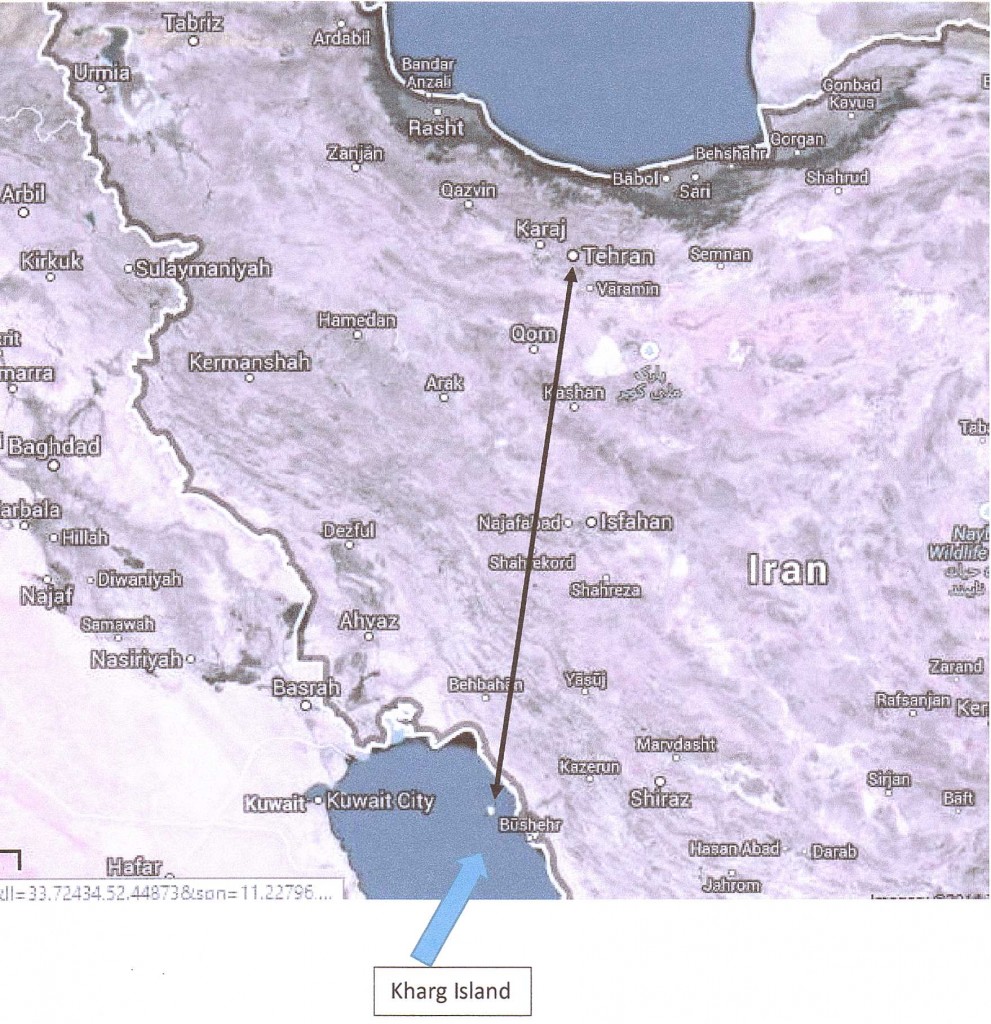
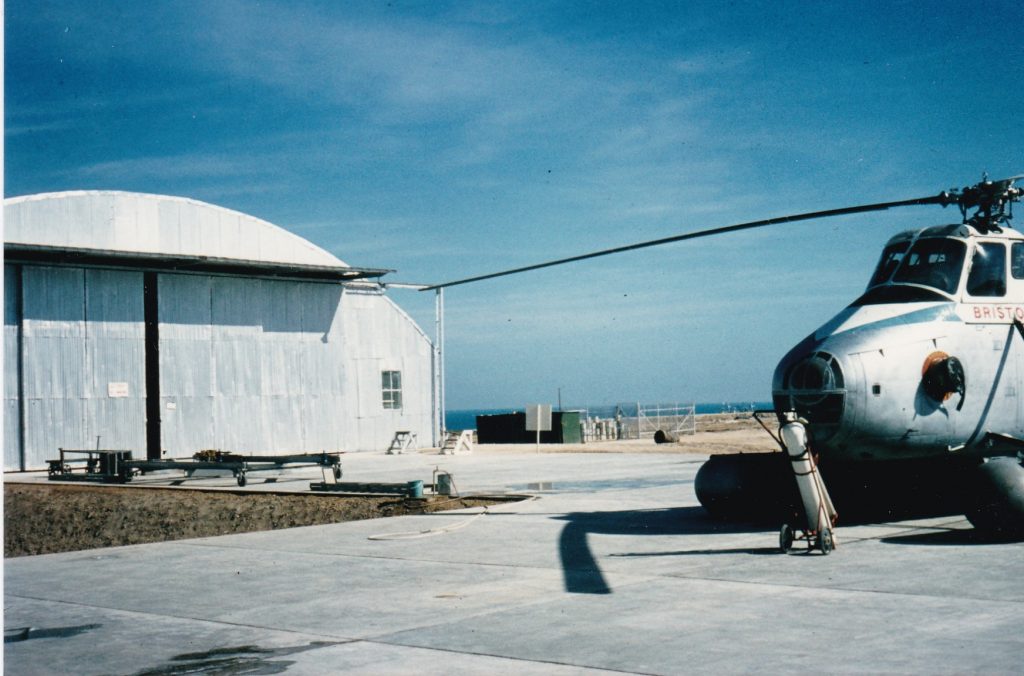
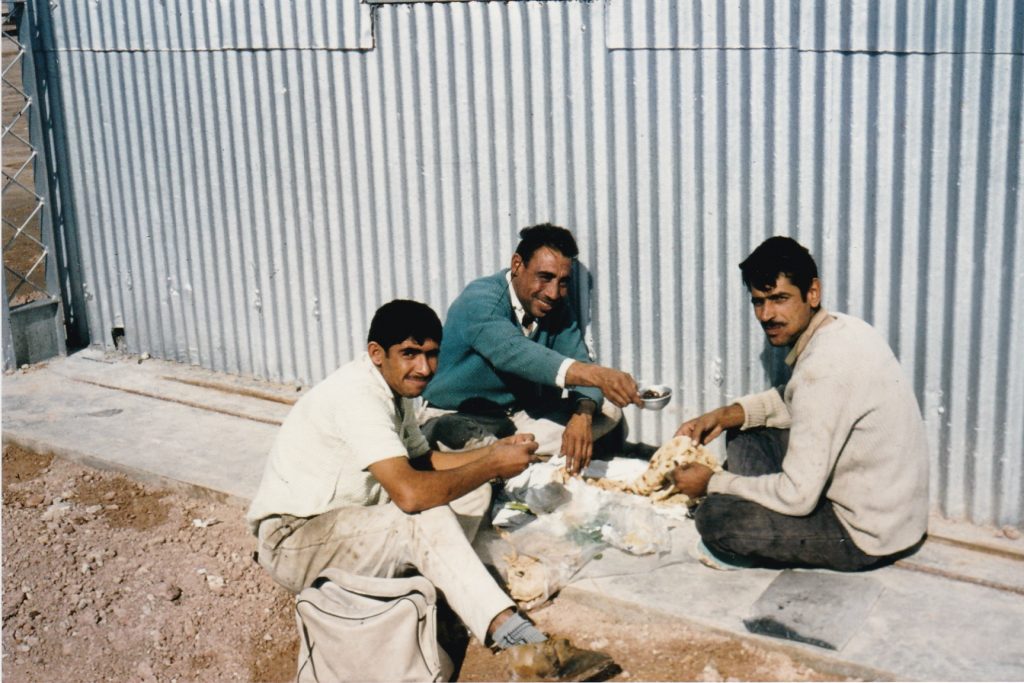
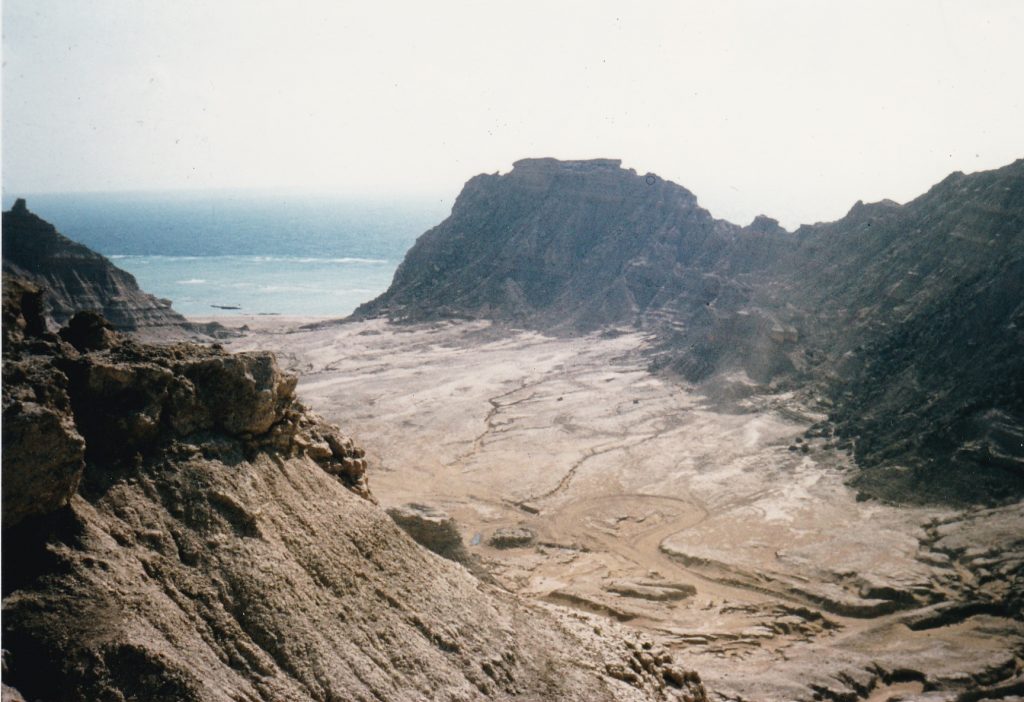
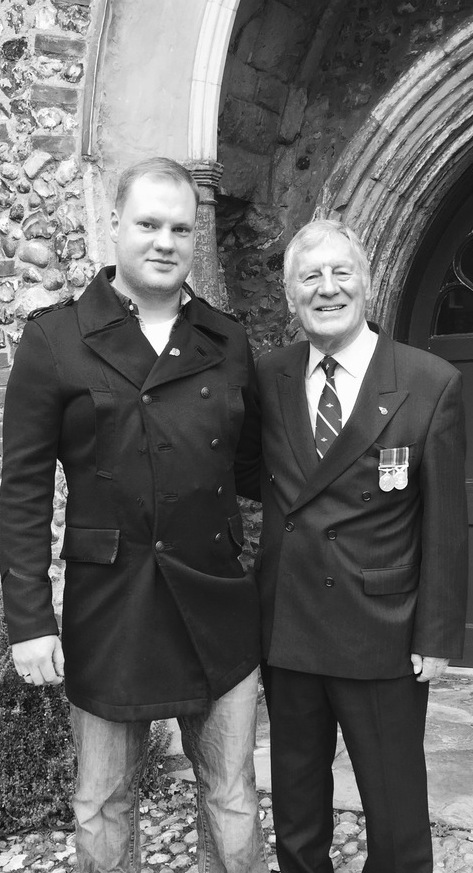
Greetings from Idaho! I’m bored to tears at work so I decided to check out your site on my iphone during lunch break. I enjoy the knowledge you present here and can’t wait to take a look when I get home. I’m surprised at how quick your blog loaded on my mobile .. I’m not even using WIFI, just 3G .. Anyhow, wonderful blog!
Thanks for your kind comments
Bill Ashpole
Hi Bill,
Please make contact. Call xxxxxxxxxxxxxxx.
Regards Doug
Dear Bill,
I was searching for some information on my late father Alistair Gordon to show my children what life was like in the early days of Bristow Helicopters. He absolutely loved his job and loved the camaraderie of the industry. I remember life in Abadan… in the pool all day, movies against a white wall and no walking near the Shatt al Arab during the ‘shelling hour’ in the afternoon. Your story brought his memory alive. Many thanks, Sarah Gordon Wild
Dear Sarah, I knew your father well. You may like to see my comments that I have just posted (awaiting approval). Apart from the fact I spent two years at Khorramshar, Alistair was Operations Director when I was appointed to be Chief Engineer of HM Coastguard SAR Helicopters at RAF Manston May 1971 – Sep 30 1974. Much later, at Redhill, I had major responsibility for marketing IHUMS to 3 3rd party operators. IHUMS was the brainchild of Alistair. I knew Alys of course and several of us played golf together. We sometimes compared notes on personal matters. In my opinion no finer man ever lived and deserved every ounce of respect he was given. Kind regards, Colin (Dusty) Miller, Horseshoe Cottage, Telford, Shropshire.
Hi Colin, I came this article and saw your name, which immediately brought back memories of Zagross. Hope this finds you well. Give me a buzz if you get this message 07552228700. Best regards, John Lenting.
Hi John – I have approved your comment. I hope you make contact again with Colin.
Best regards
Bill Ashpole
Hi Johan. Ik zag je naam voorbij komen. Is alles goed met je. Kunnen we even bijpraten. Ik zat met je op T1 en je hebt fotos van mijn zoon gemaakt voor zijn geboortekaartjes. Hoor graag. Groet, Aad Neeven 0031634659844
Dear Sarah – Thanks for the comment. Please accept my apologies for not replying sooner. There have been some problems with the website and I have not been receiving notifications of comments.
By sheer coincidence I received a telephone call from Jean Dennel this morning and before I read your remarks. You probably remember Jean, a French engineer, who was based in K’bad for a time and eventually was Chief Engineer at Redhill.. He was a close associate of your father and, like all of us in the industry, held him in high regard as one of the “Greats”. As you will have read in the blog, my first flight with him resulted in an engine failure and forced landing on the very river you mention!
Best wishes to you.
Bill Ashpole
I was at Kohorramshar from Sep ’68 to Sep ’70 as an engineer with C/Eng Dennis Knight plus 3 Iranian staff. Dennis was appointed to Malaysia during the contract and was replaced by Graham Conway. C/Pilot for much of the time was H.J (Joe) Wright plus pilots Ken Kendall (later went to Middle Wallop as an instructor) and Dave Smith. Dave Smith took over as C/Pilot when Joe Wright left EOC. We had one WS55/3 EP-HAK on contract to AGIP. We also crewed the B206 at Bahregan Oil Centre (BOC ) Dave Smith later became managing pilot at Aberdeen. Also at BOC was pilot Ray Elliot – he also became am instructor at Middle Wallop. During my time at Khorramshar, Horst Neu visited as did Bill Farnell plus Area C/Eng John Truslove and Eng Cliff Saffron. I went back to Iran in 1975 to Shiraz after 4 years as C/Eng of Coastguard SAR Manston with B204 & B212 licences, later C/Eng of BOC after stint on Kharg as relief C/Eng (for Jim Lay) with 3 x B212’s & 1x B206. Did lots of other jobs there, some quite challenging. I left March ’78, a year before the Shah left. I retired from Bristow in 2004 after 36 yrs of service which included Nigeria, Ivory Coast, Oman, time as B212 type instructor and nearly 20 years of technical support & consultancy to 3rd party operators in numerous parts of the world & S76 specialist. Remembering Khorramshar & Abadan, I played golf on the Shell ‘browns’ course. Talk about ‘Mad Dogs & Englishmen’, it was hot! Much later, I played golf with Alistair Gordon, no finer man ever lived in my view and remembered with considerable affection. Went to his house in Hassocks on a couple of occasions together with Alan Brown and many others. I recall Alistair bringing the first S61 into Redhill from Southampton docks with co-pilot Terry Burnell, also attended Alistair’s funeral…a very sad day and have paid my respects several times at his grave.
Dear Colin – Thank you for your comments on the blog. Please accept my apologies for not replying sooner. There have been some problems with the website and I have not been receiving notifications of comments.
Well that was a lot of service in Bristow’s. You certainly made your contribution to the success of that very successful company. I know a couple of the names you mention. Your history as related in your comments will serve to remind others of the various professionals who worked alongside us over the years.
I did not play gold at Abadan but do remember the “brown” gold course on Kharg Island – hazardous in the extreme as balls ricocheted off the oil pipes!
Your tribute to Alistair is so appropriate and I hope you have seen the comment from his daughter, Sarah Gordon Wild. By sheer coincidence I had a phone call from Jean Dennel this morning. I feel sure you will remember Jean – our almost tame French engineer!
Best wishes
Bill Ashpole
Dear Bill, I thank you for your response to my comments. I have not seen anything posted by Sarah in response to mine re her father, Alistair, but perhaps I will shortly. I also sent Sarah a private message via Face Book (assuming I got the correct Sarah Gordon Wild..?) but no doubt she is a busy lady. I know Jean Dennel well…..I might have seen him and many other former colleagues at our annual xmas together at a pub near Redhill Aerodrome, mostly attended by former senior staff, but I will be in Australia.
With very best wishes
Colin
Hi Colin – thanks for the note. I hope Sarah responds in due course. The blog is proving to be a useful tool to rekindle friendships with former colleagues. Hope your trip to Australia goes well. I plucked up courage to fly there for a month in August to see two grandchildren and two great-grandchildren. Had a lovely time in a wonderful country and was very impressed with the friendliness and genuineness of the Aussies. Best wishes Bill
In April 1966 23 flights a day flew nonstop to Pan Am’s terminal at JFK, scheduled 10 minutes; passengers could check in at the Pan Am Building 40 minutes before their scheduled departure out of JFK.
Thanks for your comment. New York Airways had a very sophisticated operation which came to a halt when one of their helicopters struck an obstruction on the roof helipad and a main rotor blade fell into the street far below. Very sad indeed for all concerned.
I was wondering if you every worked with or Remember Patrick O’Mara?
Best
Sean
Hi Sean
Thanks for your interest and enquiry.
I regret to say that I do not recall the name.
Sorry and best regards
Bill Ashpole
I’m assisting a distant relative who is seeking information about his late father, Andrew R Hyner, who died in 1994. We have reason to believe he was flying helicopters in the 1960s, possibly with Bristow Helicopters at Redhill where we understand they operated a training school. Can anyone recollect a trainer or student of that name. If so can they please contact me, a different Andrew, at andy.hyner@yahoo.com.ph
Hi Andrew
I have passed your request to a friend who was top engineer at Redhill many years ago. I will let you know if he knew Andrew Hyner. I will advise you or he may contact you direct.
Best wishes
Bill Ashpole
Dear Bill, I stumbled upon your website looking for John Odlin and Graham Conway and find these names mentioned here. I worked with John Odlin and Graham Conway, Vick King, Jack Willis, John Millward, Peter Piggot, and a few others, we were in Panama, Costa Rica and the Dominican Republic spraying Bananas 1959 1960, until Bristow took over and I moved on to flying helicopters in Canada. Do you have any of the contact information of any of these crews as I would like to contact them again.
Yours truly, Jon Pridie
Hi Jon – Thanks for looking at the website/blog. I don’t have many contacts but I know a man who does. I have emailed him and will let you know on your private email. Best regards Bill Ashpole
DOES ANYONE REMEMBER MY FATHER ,DICK DORMAN.HE SAID THE OTHER DAY HE WOULD LIKE TO MEET UP WITH BOB BALLS IF HE IS STILL AROUND.
REGARDS ,MICHAEL DORMAN. (ALYS WOOLLEY WAS MY GODMOTHER)
Hi Michael – I have approved your request and hope it brings a positive result – Bill Ashpole
Your photograph at the top of your Bristow Helicopters 1964 – 1966 is one of a Hiller UH12C model – the B model didnt have the bubble front !
Thanks, Bryan – a silly mistake now corrected.
Best wishes
Bill Ashpole
Hi my Dad is Wilf Shepherd, he sadly passed away in the 80’s, I would love any info or photos you may have to show his grandchildren
Dear Steven, my apologies for the tardiness of reply. For some reason the website programme is not automatically advising me by email of new comments.
I was so pleased to hear from you and learn that Wilf had a family. We had such good times together in spite of the bleakness of Kharg Island and his personality enriched the lives of John French, Alfie Hall and the others. Then there was his pipe!!! Your Dad was always pleasant and joked through the days. He was also an excellent engineer and gave me, as a pilot, great confidence in the machine.
I regret to say that I have no photos of him and the only photos I have of our life on Kharg are included in the website. I never owned a good camera then and have regretted it ever since as photos can add so much to one’s experience of life. However, others may have photos. There is a FaceBook group called “Bristow Old Gits” and there could well be some old and bolds on there who have what you seek. It is a closed group so I will ask the question and report back to you in due course.
In the meantime my very best wishes to you and your family.
Bill Ashpole
Hi anyone remember a pilot called Fred Le Grys he used to work together aswell with gorden then he went to warri round 1978
Hello Bristol people!!
I am Chint Samuel.
I was based at Redhill accountd dept., in cost engineering (1980-1997).
I have been living in the North East of Brazil near the city of Recife for nearly 20 years!! Wonderful. Warm with fantastic beach resorts.
Colin(Dusty) Miller .. how are you?
What news of Chas Newport, Alan Brown.
Any one in contact with Ian Scott,was deputy Finance Director of BHL.
It of course should read “Hello Bristow”people not Bristol…!!!
I am looking for a veteran pilot named Capt. Robin Stainton Hunt
Does anyone knows of his whereabout now
We lost contact about 40 years ago
I have been searching but until now not able to find him. Appreciate your assistance. Thank you